Once again, it's been a couple of years since we last updated our picks for the best fishing sunglasses you can take with you to the water, whether that water is a sun-drenched, crystal clear freestone river, a tree-lined spring creek, a murky bass pond, a saltwater flat or the deep blue ocean.
Sometimes, in the world of lenses and frames, two years can be a long time—with manufacturers bringing to market all sorts of innovations in materials and designs. Other times, things change very little, leaving the best choices largely the same. These last two years haven't been without innovation, but they haven't been chock full of it either. Many of our previous picks have continued to serve us as well as they did in years past, while at least one newcomer has quickly become a favorite.
And as always, our standard disclaimer: take all claims of "best of" this and "best of" that with a large grain of salt. All of our eyes are different. All anglers fish in wildly varying conditions. What helps one brain resolve objects at a distance isn't necessarily what helps another brain do the same. Our "best of" picks are simply our favorites after many years of testing a wide variety of lenses in a wide variety of conditions around the globe. We do our best to steer you in the right direction and share our opinions—but they're just that: opinions. The only one who truly knows what's best for you is you.
The trouble with sunglasses is that there's no way to test-drive them. Trying them on in the store won't tell you much about anything except (maybe) clarity. Even taking them outside for a stroll won't tell you much more. Where a pair of lenses proves its mettle is out on your fishing grounds. And so, that said, we hope our time spent wading creeks, floating rivers, stalking flats and so on, and the opinions we've formed on the lenses we've taken with us, proves helpful in making the next pair of fishing sunglasses you buy the right one.
- Costa 580G Polarized Copper
- SMITH CHROMAPOP POLARIZED BROWN
- Costa's 580G Silver Sunrise Mirror
- SMITH TECHLITE LOWLIGHT IGNITOR
- Costa 580G Green Mirror
- BLUEWATER LENSES
- Smith Techlite Polarchromic Copper

Best Full Sun
When stalking trout on a sun-baked river like Montana's Missouri—whether hunting for noses in the glare of the early morning sun or peering down from a high bank to pick out the biggest of the rainbows finning in the water below—Costa's color-blocking 580G Copper lens continues to be far and away our go-to.
If you're not well-versed in sunglass technology—and there's no good reason most people should be—the namesake for Costa's 580 series of lenses (both their 580G; glass and 580P; plastic) comes from 580 nanometers (nm): the wavelength of light at which Costa's 580 lenses block light. If you look at a chart of the color spectrum of visible light, you'll see that 580nm corresponds with yellow light. According to Costa, blocking "harsh" yellow light enhances reds, greens and blues (or at least your perception of them) and, in the process, increases definition and contrast.

When compared with a standard polarized lens, there's no doubt that Costa's 580G lenses allow for better resolution of fine details. That subtle waft of a trouts tail that allows you to spy a fish placidly taking emergers just below the surface? In our experience, you're more likely to pick that fish out if you're armed with Costa's 580G vs. other polarized lenses.
Like most glass lenses, Costa's 580G offers excellent clarity, and thanks to Costa's "Lightwave Glass", don't weigh you down quite as much as standard glass lenses. If you find the weight of glass lenses uncomfortable for all-day wear, then you can confidently look at Costa's 580 equivalent, the 580P. When push comes to shove, it doesn't offer the clarity that glass lenses do, but most people won't even be able to tell the difference.
Finally, for fishermen that fish primarily in bright sunny conditions, we've found the 12% VLT (variable light transmission) of Costa's 580G lenses to be ideal at fighting eye fatigue throughout the day. Sometimes, we'd welcome a bit more light in the fringe hours of morning and evening, but throughout a sunny day the 12% VLT seems to serve us best. If you're an older angler or anyone else whose eyes needs a just a bit more light coming through, you can look at alternatives like Smith's full sun option, detailed just below.
BUY THE COSTA 580G COPPER (via Amazon.com)
With a 14% VLT, Smith's ChromaPOP Brown lenses let through a bit more light than the Costa 580G. Now, 2% isn't exactly a ton of light, so don't expect a drastic difference. But, if you traditionally find full-sun lenses a bit dark, or want your lenses to carry you a few more minutes into the evening hatch, then Smith's ChromaPop Brown lenses are an excellent choice.
Like the Costa 580G, Smith's ChromaPop are designed to enhance contrast and definition and, also like the Costa 580G, the ChromaPop lenses do so by color-blocking at a specific wavelength. Unlike the 580-series lenses, however, Smith opted to block colors at two different wavelengths (580 and 450nm). According to Smith, this helps the brain distinguish between red, green and blue colors by blocking the areas of the color spectrum where those colors intersect. The effect is similar to that of Costa's 580-series, but not identical as one would expect given the different technology.
BUY THE SMITH CHROMAPOP BROWN (via Amazon.com)

Best Low Light
The only category with a true shake-up this go-round, low light sunglasses are a category often overlooked by many anglers. For many, this is simply because owning two (often expensive) pairs of sunglasses simply isn't an option. For those that have the luxury of a second pair of specialty shades, it's likely that they've found what we have: specialty low light lenses aren't all that specialty.
Clearly, low light lenses cover those early morning hours and evening hours when traditional sunglasses are simply too dark. But they're more versatile that you think. Once you've donned them a handful of times, you'll come to realize that on cloudy days, low light lenses are your all-day wear. Even on days with intermittent or thin cloud cover, you're often better off heading to the river with your low light lenses than your "standard" pair. And if you're fishing a down in a shaded canyon, an Arkansas holler or a tight tree-choked eastern mountain creek where sunlight comes in fits and starts—again, low light lenses should be your go to.
We've been fishing Costa's new entry into the low light market—it's 580-series Silver Sunrise Mirror lens—for a couple of years now and in that time, particularly driven by the recent first-time release of the "G" version of this lens, it has supplanted old favorites like Maui Jim's HT lens. Costa's 580G Silver Sunrise Mirror offers a 30% VLT, letting in a great deal more light than your standard 10-14% VLT full-sun lens. While another old favorite, Smith's Techlite Low Light Ignitor, offers considerably more light with its 40% VLT, we still find clarity and object resolution increased with Costa's Sunrise Mirror lens—due most likely to the presence of color-blocking, a feature lacking in other low light lenses.
BUY THE COSTA 580G SILVER SUNRISE MIRROR (via Amazon.com)
As mentioned above, the Smith Techlite Low Light Ignitor lets offers 10% more VLT than the Costa Silver Sunrise Mirror. You won't get the versatility that you'll find in the Costa lens, but if true low-light speciality is what you're looking for, don't hesitate to give these Smiths a try.
BUY THE SMITH TECHLITE LOW LIGHT IGNITOR (via Amazon.com)

Best Saltwater
It's likely that, over the years, our choice for flats lenses has evolved more than any other. Our recommendation for which lens to use hasn't varied all that much, but our confidence with which we make it has. That might be simply because most of us don't get to spend 100 days a year on the flats chasing bonefish, tarpon, barracuda or, if you're really lucky (or seriously deranged), permit. But, given more time on the flats, we've become increasingly biased towards Costa's 580G Green Mirror lenses—a lens that Costa crafts specifically for flats environments as opposed to blue (deep) water ocean environments.
Here's a secret, or maybe just something you're not paying attention to: the next-best lenses for flats fishing other than those made specifically for the flats are the ones you probably already have—your copper or bronze polarized lenses. In flats environments, which are predominated by clear waters and shallow depths, the same lenses which serve you best in enhancing contrast and definition are the ones that serve you well on your trout stream.
The way to up the game for use on the flats is to cut the VLT, blocking more of the harsh, constant sun found in the tropics and clean up the light a bit by blocking selectively. Costa's 580G Green Mirror tackles both these tasks by dropping the VLT to 10%, color-blocking yellow light at 580nm like all 580-series and by adding in the green mirror coating to reflect away green light/glare from the flats (if you think blue when you think flats, don't—take a closer look at your photos—the predominant colors on the flats are yellow and green).
While a bit more light blocking and color reflection might not sound like much, spotting fish on the flats is typically very difficult for anglers that don't spend most of their days there. Given such, we'll take every opportunity to stack the odds of spotting a cruising bonefish or permit in our favor and, over many days spend on flats from Florida to Belize, we've not found anything we trust as much as Costa's 580G Green Mirror lenses.
BUY THE COSTA 580G GREEN MIRROR (via Amazon.com)

Frankly, we're not sold on the idea that specialty blue water lenses are a thing. That is, that they're necessary. We've been well served by Costa's Green Mirror and standard copper/bronze full sun lenses when out patrolling the deep. That said, if you're looking for a blue water specialist, we've been equally (if not a tad bit more) impressed by Smith's ChromaPop Blue Mirror and Costa's 580G Blue Mirror.
BUY THE SMTH CHROMAPOP BLUE MIRROR (via Amazon.com)
BUY THE COSTA 580G BLUE MIRROR (via Amazon.com)

Most Versatile
The more things change, the more they stay the same. And one thing that hasn't changed, since our very first series of picks for the best fishing sunglasses some 7 years ago, is the selection of Smith's Techlite Polarchromic Copper lenses as the most versatile pair of fishing sunglasses on the market.
Smith spends most of its time marketing it's ChromaPop line of (plastic) lenses these days. Meanwhile, as the years click by, Smith keeps manufacturing and selling it's Techlite line of glass lenses, albeit to little fanfare. And while they may not offer the color-blocking technology found in Smith's ChromaPop lineup or Costa's 580-series, what they do offer is stunning clarity.
But the reason that Smith's Techlite Polarchromic Copper lenses continue to claim the "most versatile" mantle is the fact that their VLT adjusts as light conditions change. That's the "polarchromic" part of the puzzle. Remember the kids in elementary school that you made fun of for wearing Transitions lenses? Transitions are polarchomic—only no one is going to make fun of you for being able to see more fish because you're wearing polarized lenses in the margin hours when other anglers' shades are hanging around their necks.
When the sun is brighter, the lenses get darker. When there's less light out, the lenses get brighter. Throughout the course of a fishing day, the VLT of the Polarchromic Copper lenses can adjust anywhere from 12% to 20%.










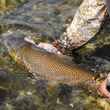




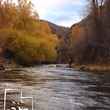



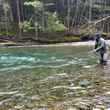
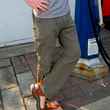



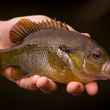
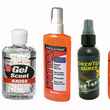



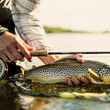
Comments
LuckyStrike replied on Permalink
I never leave home for a day on the water without a pair of Costas or Smiths. Daytime river fishing, the Costas copper lens does the job and during low light or cloudy conditions, the polarchromic amber lens covers that aspect. It might be expensive to own two pairs of shades, but it's something that you can't afford NOT to have. Makes a world of difference!
John D replied on Permalink
So many of us require prescription lenses. Could you please update this helpful article to include corrective eyewear? Thanks!
Jason Street replied on Permalink
No Jims? They make the best fishing sunglasses IMO, although Costs and Smiths are high quality as well.
Pages